Agentes Secretos y el Mural de Picasso is a captivating Spanish reader that combines historical fiction, cultural insights, and language learning. Set during the Spanish Civil War, it intertwines Picasso’s iconic Guernica with the supernatural Spear of Destiny, creating a thrilling narrative for learners.
Overview of the Book
Agentes Secretos y el Mural de Picasso is a Level 1 Spanish reader designed for language learners. Set during the Spanish Civil War, the story revolves around Picasso’s iconic Guernica mural, which holds hidden clues to the supernatural Spear of Destiny. This powerful artifact is sought after by opposing forces, believing its occult power can alter the war’s outcome. The narrative follows secret agents, thrilling chases, and cultural landmarks like Barcelona’s Las Ramblas and Paris’s Sainte-Chapelle. With a focus on simple vocabulary and engaging plot, the book is ideal for first-semester Spanish students. It seamlessly combines historical fiction, cultural insights, and language acquisition, making it both educational and entertaining.
Genre and Style
Agentes Secretos y el Mural de Picasso falls under the genre of historical fiction, blending elements of espionage, romance, and the supernatural. The story is crafted in a cinematic style, with fast-paced action, car chases, and suspense, making it engaging for readers. The author, Mira Canion, employs a clear and simple writing style, suitable for early-stage Spanish learners. The narrative is enriched with cultural references and historical context, such as Picasso’s Guernica and the 1937 International Exposition, adding depth to the plot. The book’s language is accessible, with limited vocabulary and repetitive structures, making it ideal for TPRS (Teaching Proficiency Through Reading and Storytelling) methodologies in foreign language classrooms.
Target Audience

Agentes Secretos y el Mural de Picasso is primarily designed for early-stage Spanish learners, particularly first-semester students. Its simple, repetitive language and limited vocabulary make it accessible for those building foundational skills. The book is ideal for TPRS (Teaching Proficiency Through Reading and Storytelling) classrooms, as it aligns with this method’s focus on comprehensible input. Young adults and learners who enjoy action-packed narratives with cultural and historical context will find the story engaging. Additionally, the book appeals to educators seeking materials that integrate language learning with cultural enrichment, making it a versatile resource for both individual and classroom use.

Historical Context of the Story
Agentes Secretos y el Mural de Picasso unfolds during the Spanish Civil War, with Picasso’s Guernica debuting at the 1937 International Exposition, becoming a key plot element tied to the Spear of Destiny.
The Spanish Civil War
The Spanish Civil War (1936–1939) serves as the backdrop for Agentes Secretos y el Mural de Picasso, a period marked by political unrest and violent conflict. The war pitted the Republican government against the Nationalist forces led by General Francisco Franco. Picasso’s Guernica, a powerful anti-war statement, debuted at the 1937 International Exposition in Paris, becoming a symbolic focal point in the story. Both sides recognized the mural’s hidden clues about the Spear of Destiny, a supernatural artifact believed to hold occult power capable of altering the war’s outcome. This historical setting adds depth to the narrative, blending real events with fictional espionage and intrigue. The war’s chaos and ideological divisions create a tense atmosphere, driving the plot’s suspense and the characters’ motivations. The book captures the era’s turmoil while weaving a thrilling tale of spies, art, and destiny.
The 1937 International Exposition
The 1937 International Exposition in Paris serves as a pivotal setting in Agentes Secretos y el Mural de Picasso. This global event showcased cutting-edge art, technology, and culture, attracting visitors from around the world. Pablo Picasso’s iconic Guernica was unveiled here, drawing international attention for its powerful anti-war message. The exposition’s grandeur and cultural significance provided the perfect backdrop for the story’s central plot: the hunt for the Spear of Destiny. As the mural gains prominence, its hidden symbols and clues become a focal point for both sides of the Spanish Civil War. The exposition’s historical context adds authenticity to the narrative, blending real-world events with the fictional espionage and intrigue that drive the story forward. This setting highlights the intersection of art, history, and mystery in the tale.
Historical Myths and the Spear of Destiny
The Spear of Destiny is a legendary artifact steeped in historical myths, believed to grant immense power to its possessor. In Agentes Secretos y el Mural de Picasso, this Spear is portrayed as a supernatural object capable of altering the course of the Spanish Civil War. Its occult power is central to the plot, driving the espionage and intrigue as both sides of the conflict seek to claim it. The Spear’s historical significance is intertwined with its mythical origins, creating a sense of urgency and danger. Picasso’s Guernica mural is said to contain hidden clues about its location, adding a layer of mystery and cultural relevance to the narrative. This blend of myth and history elevates the story’s tension, making the Spear a pivotal element in the race to control its power.
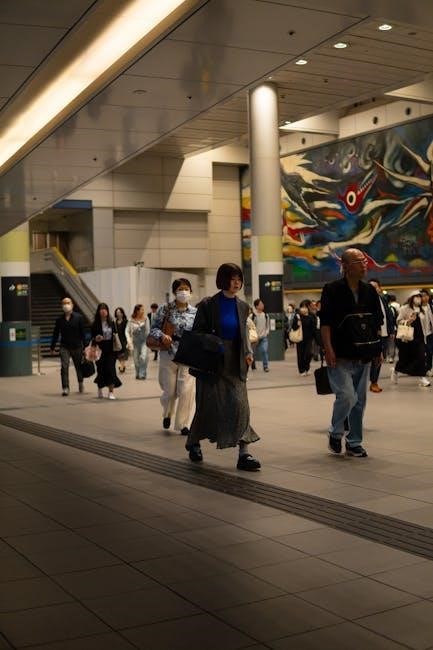
Cultural Significance in the Narrative
Picasso’s Guernica and the Spear of Destiny serve as cultural pillars, weaving historical and artistic symbols into the story. The narrative highlights Spain’s rich heritage and its global impact.
Picasso’s Guernica as a Cultural Icon
Picasso’s Guernica is a powerful anti-war statement and a masterpiece of 20th-century art. Displayed at the 1937 International Exposition, it becomes a central element in the story, symbolizing the horrors of the Spanish Civil War. The mural’s bold imagery and emotional intensity make it a cultural icon, representing the suffering of innocent civilians. Its presence in the narrative underscores the historical context and the human cost of conflict. By incorporating Guernica, the book connects readers to Spain’s rich artistic heritage and the global significance of Picasso’s work. This cultural landmark not only enriches the plot but also serves as a reminder of the enduring impact of art in understanding history.
Cultural Landmarks in the Story
The narrative weaves in iconic cultural landmarks such as Las Ramblas in Barcelona and Sainte-Chapelle in Paris, blending real-world locations with the fictional plot. These landmarks serve as backdrops for key events, like car chases and secret meetings, adding authenticity to the story. The city of Pamplona is also featured, highlighting its cultural significance, particularly during the Running of the Bulls. These locations not only enrich the narrative but also provide readers with a sense of place and connection to Spanish and European culture. By incorporating these landmarks, the book offers cultural enrichment while maintaining a thrilling pace, making it both educational and engaging for Spanish learners. This creative integration of real-world sites enhances the story’s depth and appeal.
The Role of Picasso’s Mural
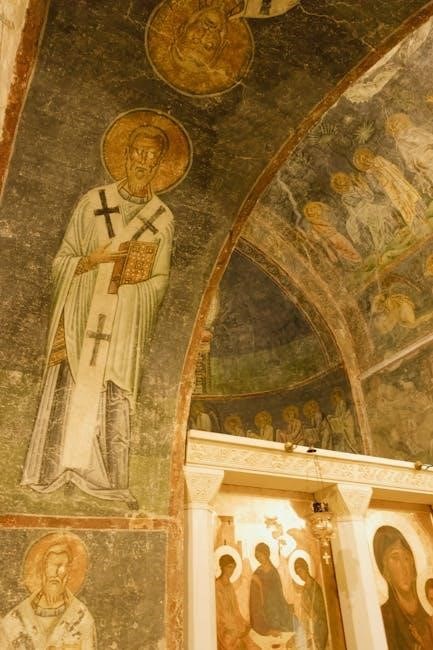
Picasso’s Guernica serves as a central plot device, hiding clues about the Spear of Destiny. Its cultural and historical significance drives the narrative, intertwining art with espionage and supernatural elements.
Symbolism and Hidden Messages
Picasso’s Guernica is more than a powerful anti-war statement; it holds cryptic symbols tied to the Spear of Destiny. The mural’s chaotic imagery and monochromatic palette reflect the horrors of war, while subtle details point to the supernatural artifact’s location. Picasso’s artistic genius allows him to conceal clues within the painting, making it a puzzle for the story’s characters. The screaming animals, shattered bodies, and fragmented forms symbolize chaos and destruction, but also hint at the occult power of the Spear. As Paula deciphers these hidden messages, the mural becomes a key to unlocking the artifact’s whereabouts, blending art, history, and espionage into a thrilling narrative. The interplay between Picasso’s creativity and the supernatural elements elevates the story, making Guernica a central plot device.
Impact on the Plot Development
The discovery of hidden messages in Picasso’s Guernica propels the plot forward, driving characters to decipher its clues. Paula’s interpretation of the mural’s symbols leads to high-stakes chases and espionage, as both sides of the Spanish Civil War race to claim the Spear of Destiny. The mural’s role as a puzzle deepens the story’s suspense, revealing how art and history intersect. Each clue uncovered adds layers to the narrative, connecting Picasso’s creative genius to the supernatural artifact. This interplay between art and espionage keeps readers engaged, while the pursuit of the Spear escalates tensions and defines the characters’ motivations. The mural’s significance extends beyond aesthetics, becoming a pivotal element in the story’s progression and resolution.
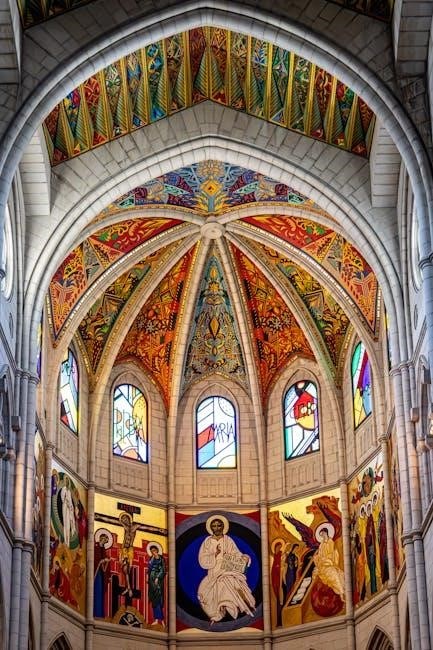
The Spear of Destiny
The Spear of Destiny, an ancient relic of immense occult power, is central to the plot, sought by opposing forces in the Spanish Civil War to influence its outcome.
Historical Background
The Spear of Destiny, a legendary relic, is steeped in historical myths, often linked to figures like Charlemagne and Adolf Hitler. Its origins trace back to the Roman Era, with claims of being the spear that pierced Jesus Christ’s side. Throughout history, it has been associated with immense power, believed to grant its possessor unparalleled dominance. The spear’s historical significance is intertwined with European conflicts, particularly its alleged influence on the outcomes of wars. In the context of Agentes Secretos y el Mural de Picasso, the Spear of Destiny becomes a pivotal element during the Spanish Civil War, with both sides believing its occult power could alter the war’s course; This historical artifact adds depth to the narrative, connecting it to real-world legends and events, while also highlighting its cultural and symbolic importance in the story.
Occult Power in the Story
The Spear of Destiny holds immense occult power, believed to grant its possessor the ability to control world events. In Agentes Secretos y el Mural de Picasso, this supernatural artifact becomes a central plot device, driving the motivations of both the protagonists and antagonists. Its power is tied to historical myths, where it has allegedly influenced the outcomes of major conflicts. Within the story, the Spear’s occult abilities are not only a source of fear but also a catalyst for action, as secret agents race to uncover its location. Picasso’s Guernica serves as a cryptic guide, with hidden symbols pointing to the Spear’s whereabouts. This blend of historical myth and fictional intrigue creates a suspenseful narrative, highlighting the Spear’s role as a game-changer in the Spanish Civil War.
Secret Agents in the Story
Dynamic spies engage in thrilling chases and espionage, driven by the quest for the Spear of Destiny and deciphering Picasso’s Guernica, adding action and suspense to the narrative.
Role and Motivation
The secret agents in the story are elite operatives with a clear mission: to uncover the Spear of Destiny, a supernatural artifact hidden in Picasso’s Guernica. Their primary role is to decipher the mural’s hidden symbols, racing against opposing forces to gain control of the Spear’s occult power. Motivated by loyalty to their respective sides in the Spanish Civil War, these agents are skilled in espionage, cryptography, and martial arts, making them formidable adversaries. Their actions drive the plot’s suspense, as they navigate through historical landmarks and cultural icons, blending espionage with the pursuit of a legendary relic. Their motivations are deeply tied to the war’s outcome, adding depth to their characters and the story’s historical context.
Historical Espionage Elements
The narrative weaves in authentic historical espionage elements, reflecting the tense atmosphere of the Spanish Civil War. Secret agents engage in covert operations, deciphering codes and uncovering hidden clues within Picasso’s Guernica. The story draws inspiration from real-life espionage tactics of the era, such as cryptic communications and undercover missions. Historical settings like the 1937 International Exposition in Paris add authenticity, while cultural landmarks such as the Sainte-Chapelle serve as backdrops for high-stakes pursuits. The agents’ use of encryption and psychological strategies mirrors the intelligence practices of the time, blending fiction with historical accuracy. These elements create a gripping atmosphere, where the line between fact and fiction blurs, immersing readers in the era’s intrigue.

Educational Value
Agentes Secretos y el Mural de Picasso is a Level 1 Spanish reader designed for beginners, offering language learning features like simple vocabulary and cultural enrichment through its engaging storyline.
Language Learning Features
Agentes Secretos y el Mural de Picasso is a Level 1 Spanish reader designed for beginners, featuring 100 new vocabulary words and numerous English-Spanish cognates. Its simple, repetitive language makes it ideal for TPRS (Teaching Proficiency through Reading and Storytelling) methodologies. The engaging storyline, filled with spies, car chases, and humor, keeps learners motivated while introducing cultural elements like Picasso’s Guernica and the Spear of Destiny. The book’s structured approach allows students to acquire language naturally through context and repetition, making it a valuable tool for Spanish classrooms and self-study.
Cultural Enrichment
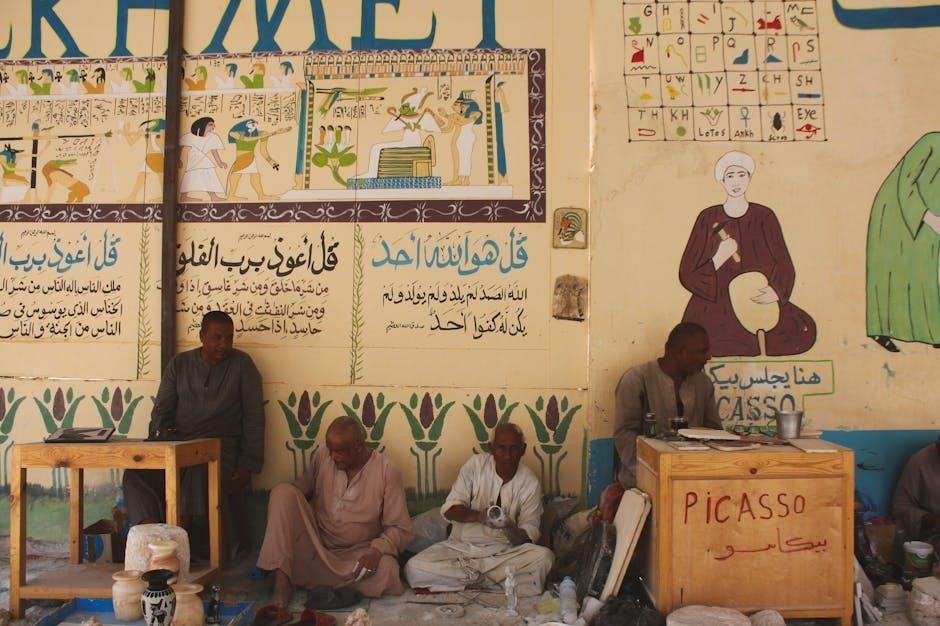
Agentes Secretos y el Mural de Picasso offers rich cultural enrichment by weaving iconic landmarks and historical artifacts into its narrative. The book highlights Pablo Picasso’s Guernica, a powerful anti-war symbol, and the Spear of Destiny, a mythical object steeped in history. Readers are introduced to cultural landmarks like Las Ramblas in Barcelona and Sainte-Chapelle in Paris, blending art, history, and geography seamlessly. The story’s setting during the 1937 International Exposition and the Spanish Civil War provides historical context, while the inclusion of cultural products like the running of the bulls adds a vibrant Spanish flair. This integration of culture makes the book not only entertaining but also educational, offering learners a deeper connection to Spanish heritage and global history.
Author Background
Mira Canion is an author known for creating engaging Spanish readers that combine storytelling with cultural immersion, fostering language learning through entertaining and educational narratives.
Mira Canion’s Biography
Mira Canion is a renowned author specializing in Spanish language learners’ literature. She is best known for crafting engaging and educational stories that blend cultural immersion with language acquisition. Her works, such as Agentes Secretos y el Mural de Picasso, are designed to support students in their Spanish learning journey. Canion’s approach focuses on creating narratives that are both entertaining and instructive, making complex language concepts accessible to learners of all levels. Her books often incorporate historical and cultural elements, providing readers with a deeper understanding of the Spanish-speaking world. By combining storytelling with educational goals, Mira Canion has become a trusted name in language learning literature.
Her Approach to Storytelling
Mira Canion’s storytelling approach is rooted in Teaching Proficiency Through Reading and Storytelling (TPRS), emphasizing engaging narratives to facilitate language acquisition. Her stories, like Agentes Secretos y el Mural de Picasso, blend historical events, cultural landmarks, and supernatural elements to captivate learners. Canion uses simple, repetitive language and vivid descriptions, making her books accessible to Spanish learners while fostering cultural understanding. She integrates historical context, such as the Spanish Civil War and Picasso’s Guernica, to create immersive experiences. By weaving action, romance, and humor into her plots, Canion ensures her stories are both entertaining and educational, helping students internalize the language through compelling narratives.
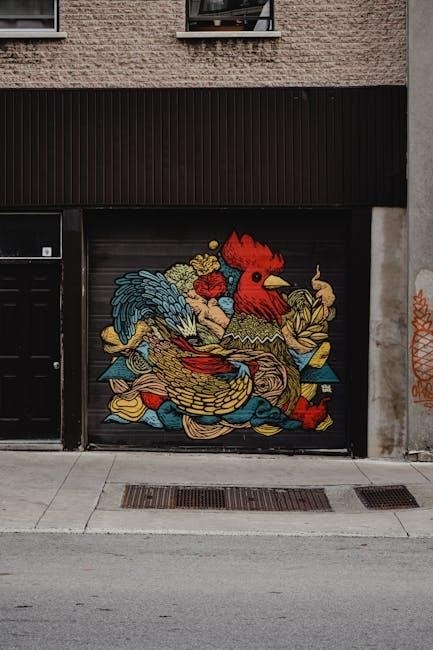
Reception and Reviews
Agentes Secretos y el Mural de Picasso has received a 4.8-star rating, praised for its engaging storyline and cultural depth. Readers highlight its suitability for Spanish learners, blending spy thrills with historical context.
Its unique mix of action, romance, and humor makes it a standout in language learning literature, with educators recommending it for TPRS classrooms and beginner students.
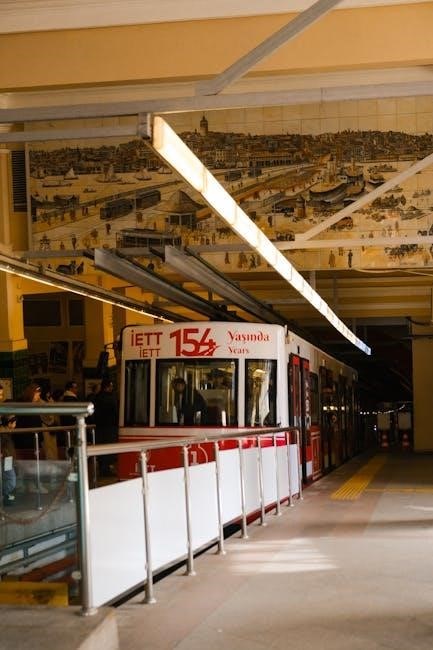
Reader Feedback
Agentes Secretos y el Mural de Picasso has garnered widespread acclaim for its engaging and educational approach. Readers praise its unique blend of a spy thriller with historical and cultural elements, particularly the inclusion of Picasso’s Guernica and the Spear of Destiny. Many highlight the book’s ability to make complex Spanish grammar and vocabulary accessible, while others appreciate its fast-paced narrative, which keeps learners motivated. The cultural insights and historical context have resonated deeply, with readers noting how the story enhances their understanding of Spanish heritage. Educators and students alike commend its suitability for TPRS methodologies, emphasizing its value in language acquisition. Overall, the book is celebrated for its entertaining yet enriching qualities, making it a standout choice for Spanish learners seeking both fun and intellectual growth.
Use in Educational Settings
Agentes Secretos y el Mural de Picasso is widely used in Spanish classrooms due to its engaging storyline and language learning features. Teachers appreciate its alignment with TPRS (Teaching Proficiency through Reading and Storytelling) methodologies, making it ideal for interactive lessons. The book’s simplicity and cultural richness make it suitable for first-semester Spanish students, introducing them to essential vocabulary and grammar. Educators often incorporate the text into reading comprehension exercises, vocabulary building activities, and discussions about historical and cultural contexts. Its blend of espionage, romance, and humor captivates students, fostering motivation and language retention. Many instructors praise its ability to connect language learning with cultural enrichment, making it a valuable resource for immersive and effective Spanish instruction.
Agentes Secretos y el Mural de Picasso captivates learners with its blend of history, culture, and suspense, making it an invaluable tool for Spanish language acquisition and cultural enrichment.
Significance of the Book
Agentes Secretos y el Mural de Picasso holds significant value as a language learning tool and a cultural narrative. It bridges Spanish language acquisition with historical events, such as the Spanish Civil War and the 1937 International Exposition, while incorporating iconic cultural symbols like Picasso’s Guernica. The book’s unique blend of espionage, romance, and supernatural elements captivates readers, making it an engaging resource for learners. Its focus on cultural landmarks and historical myths enriches the reader’s understanding of Spain’s heritage. Additionally, the story’s thriller-like plot, filled with spies and hidden messages, appeals to a wide audience, from students to history enthusiasts. This book not only aids in language development but also fosters cultural appreciation and historical awareness, making it a valuable resource for educational settings and personal enrichment.
Appeal to Spanish Learners
Agentes Secretos y el Mural de Picasso is a highly engaging Spanish reader designed for language learners. Its simplistic yet thrilling plot, filled with spies, car chases, and romance, keeps readers entertained while immersing them in the language. The story’s setting in iconic locations like Pamplona and Barcelona, along with cultural references such as Picasso’s Guernica, provides learners with a rich cultural context. The book’s TPRS-based approach ensures that new vocabulary and phrases are introduced in a fun and repetitive manner, making it ideal for first-semester students. With only 100 new vocabulary words and many English-Spanish cognates, it is accessible to beginners while fostering both language skills and cultural understanding. This makes it a perfect tool for Spanish learners seeking to combine education with enjoyment.
